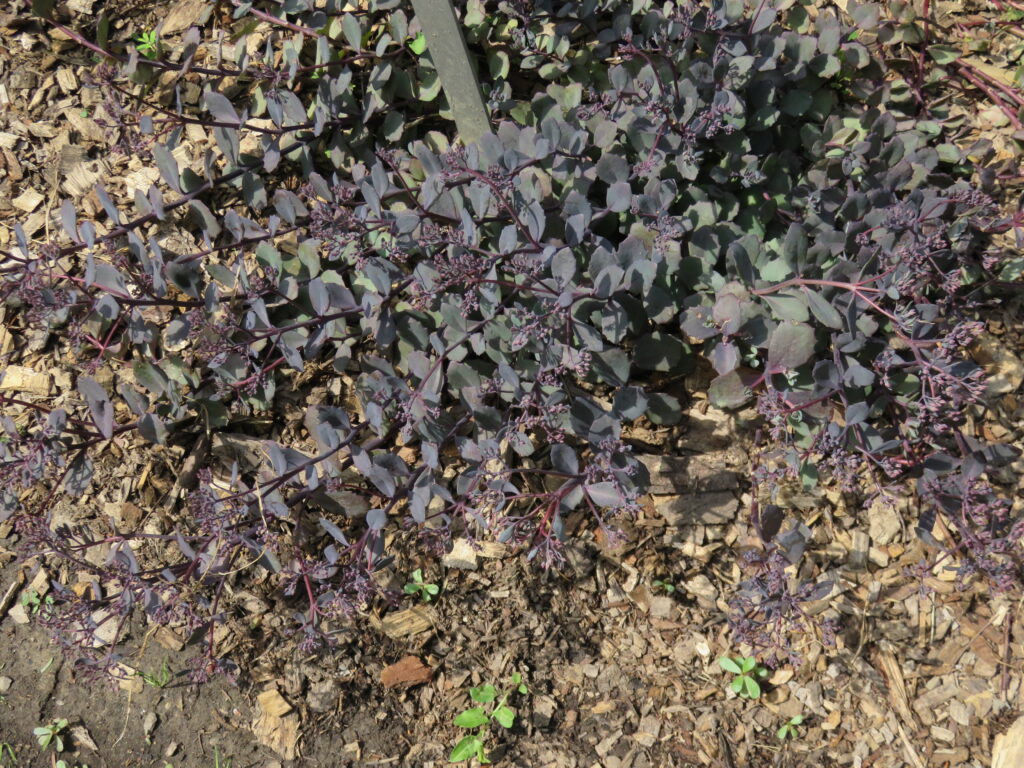
Low creeping sedums (stonecrops) are super nice groundcover plants. Consider planting stonecrops in border fronts, on moderate slopes, containers and rock gardens. Plant in the partial to full sun, although many species grow well in light shade. The site should have good soil drainage. Sedums are also planted on “green roof” and “green wall” systems. I utilize groundcover sedums as niche plants and fill containers in sunny spots that need a splash of color.
Butterflies and bees come to visit their flowers in summer. These non-patented sedums are easy to propagate by cuttings in summer or dividing in spring or fall. Watch for slugs, scale, mealybugs, and aphids and spray accordingly. Rotting out of roots is possible in wet and/or poorly drained sites. Deer and rabbits generally snub sedums. In spring pinch back plants to force plants to grow thicker and bushier.
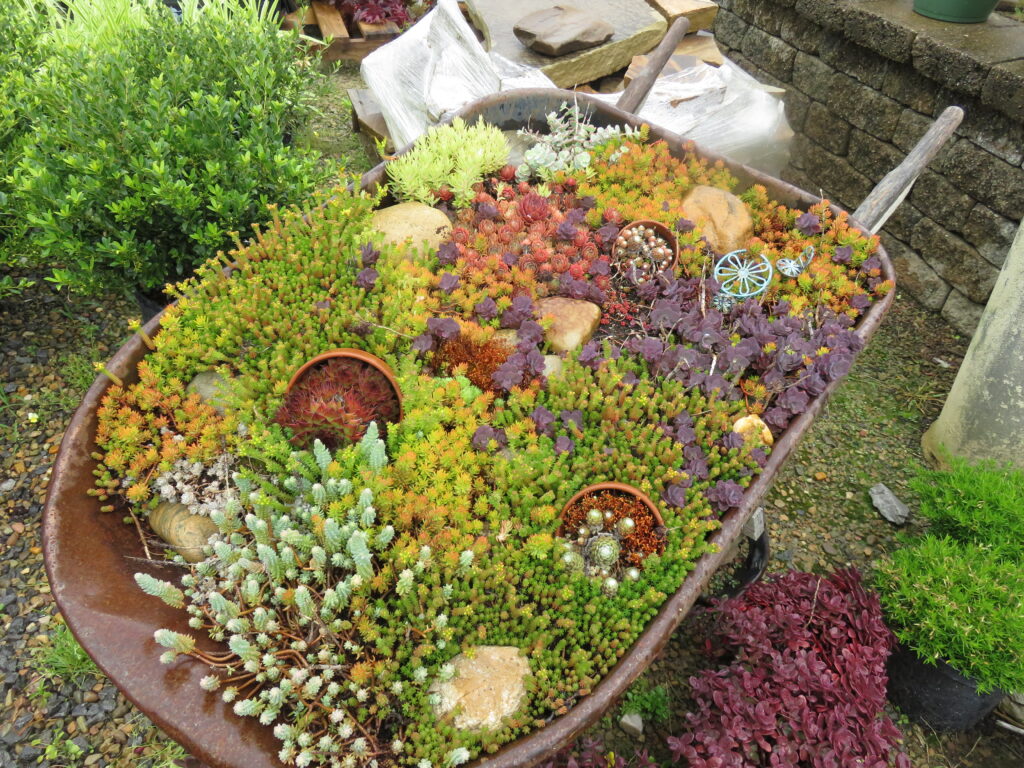
These 6 sedum species are both dependable and ask for little maintenance… just a little hand weeding and liquid feeding with Miracle-Gro™ every 4-6 weeks. Some grow aggressively while others slow and steady.
‘Bertram Anderson’ – this slow-growing, ground-hugging sedum (4-6 inches high x 12-18 inches wide) forms a low carpet of small, burgundy-black leaves, spreading to form a small patch. Clusters of purple-red star flowers appear in late summer. It is well suited to the rock garden, or for edging, also a good choice for tubs and mixed containers. Royal Horticulture Society Award of Garden Merit in 1996. (Zones 3-9).
Russian stonecrop (Sedum kamtschaticum variegatum) forms a low mound of attractive green and cream-splashed leaves. Clusters of orange-yellow star flowers appear in summer. Deciduous; trim stems and dead flower heads back in early spring. A white-edged variegated form is steadfast and rarely reverts to green edged. Foliage colors are more intense and flowering more prolific in sunny areas. (Zones 3-9).
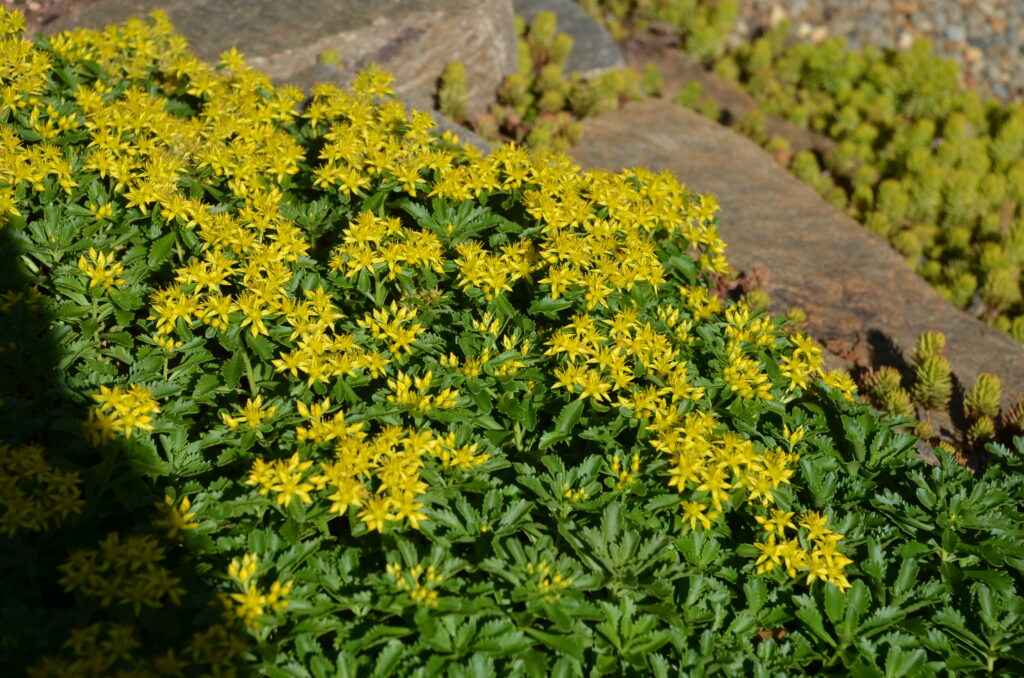
Angelina sedum (Sedum rupestre ‘Angelina’) is loved for striking spiky yellow leaves that turn an attractive red-orange color when the cool weather arrives in the fall. This 4-inch-tall mat-forming sedum spreads rapidly. Fallen leaves tend to propagate freely. (Zones 5-8).
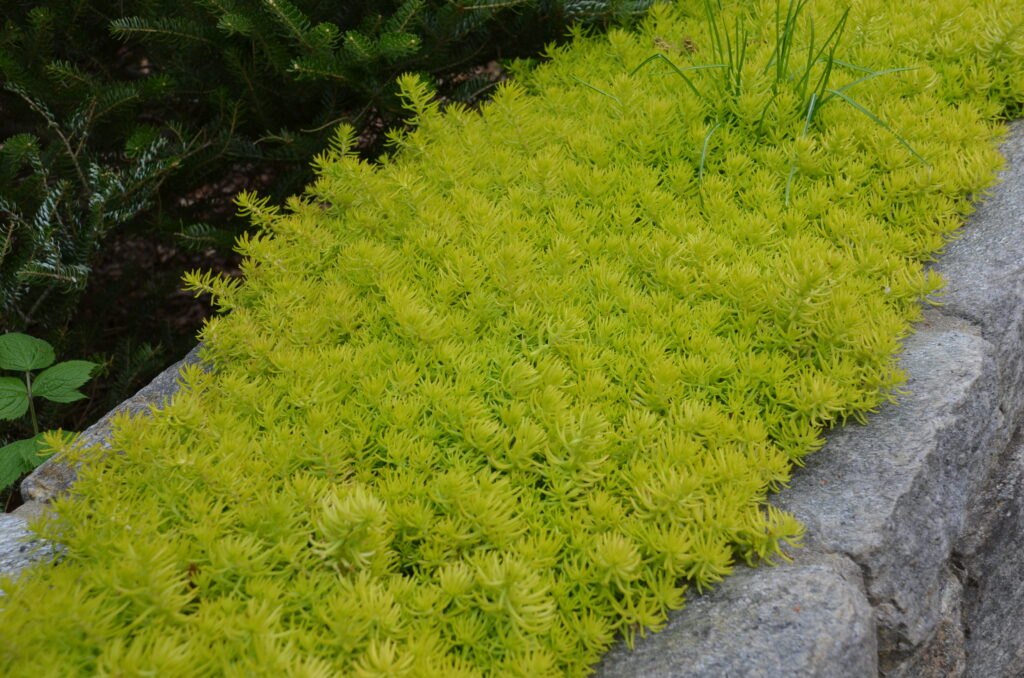
Sedum ‘Vera Jameson’ is a clump-forming 9-12-inch-tall sedum that features masses of tiny, star-like, dusky pink flowers in large, 4-inch across, flattened heads (cymes) and round purplish leaves growing in somewhat sprawling clumps. Stems and leaves start out bluish-green, and turn a rich, deep reddish-purple. (Zones 3-9).
Caucasian Stonecrop (Phedimus spurius ‘Dragon’s Blood’) is a highly popular sedum with deep purple (burgundy) foliage that turns entirely red by fall. Its pinkish-purple flowers bloom from midsummer into autumn. In spring plants arise from dormancy with green leaves and red flowers to follow. This 4-6 inch tall sedum spreads to 24 inches in a few years. (Zones 3-9).
John Creech Caucasian Stonecrop (Phedimus spurius ‘John Creech’) has medium green edged with reddish-tinged margins. Lower stem leaves are deciduous, and newer leaves near the stem tips are evergreen, typically turning deep burgundy in fall for overwintering. Leaves are arranged in two rows along the stems.
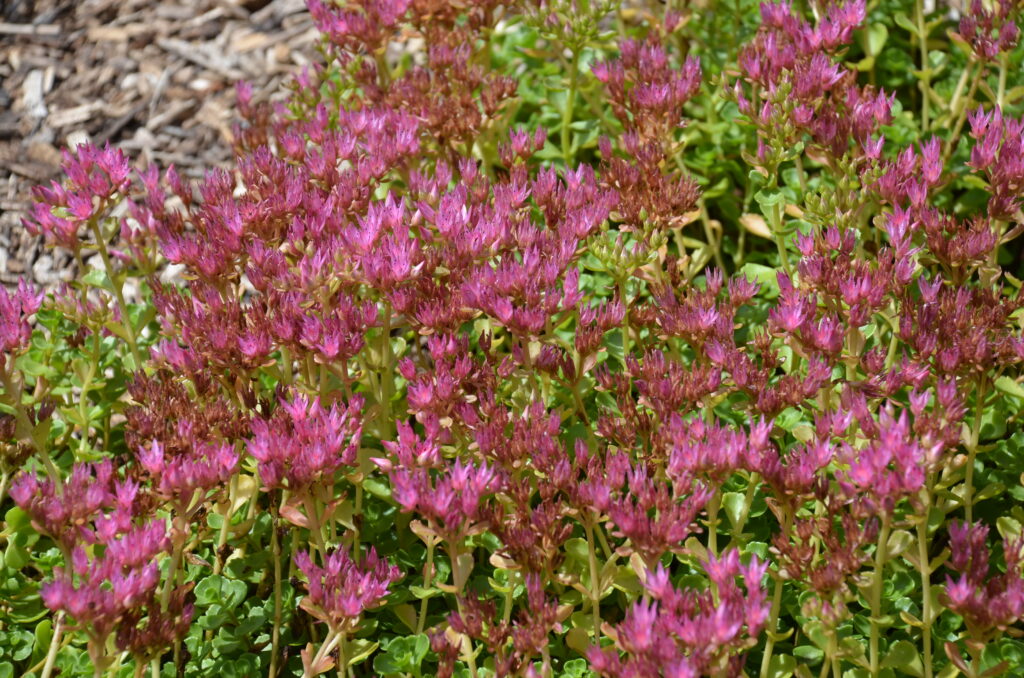
Fill container with a well-draining substrate such as a mix of 3 parts gardening soil, 3 parts coarse sand, and 1 part perlite. lastly, add a very thin layer of vermiculite or sphagnum peat moss to improve soil water holding capacity. Containers also should have multiple bottom holes for adequate drainage. Irrigation pots and garden collection beds during prolonged dry period lasting 10 days or more. After flowering trim off spent blooms; some sedums will repeat bloom if kept deadheaded.

 Posted in
Posted in 
